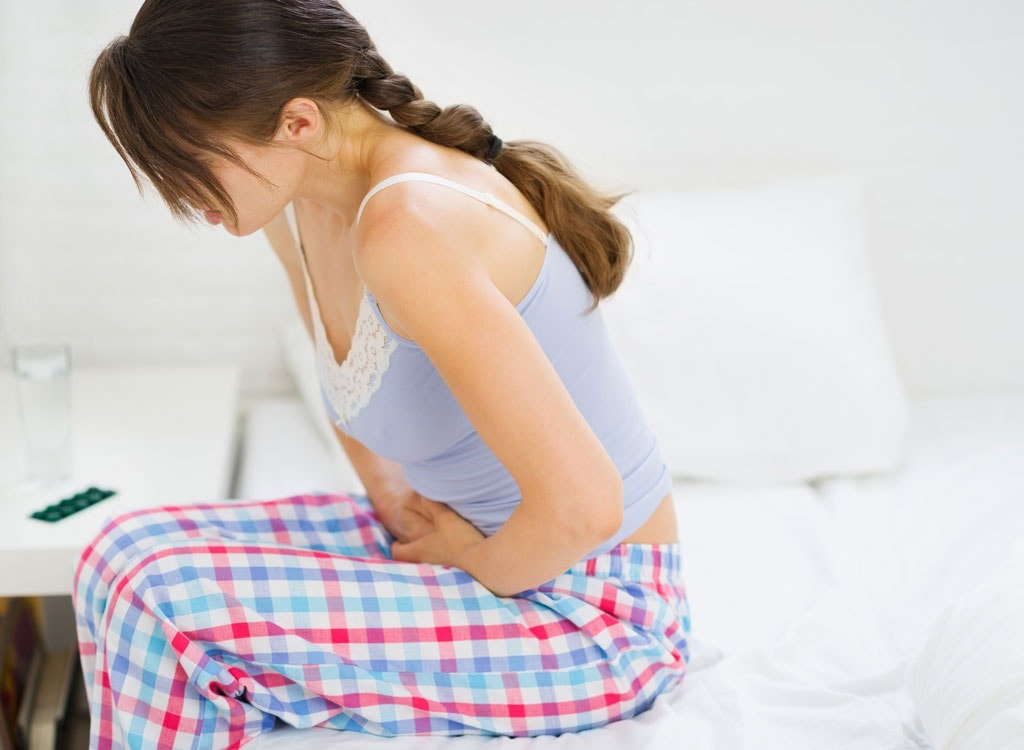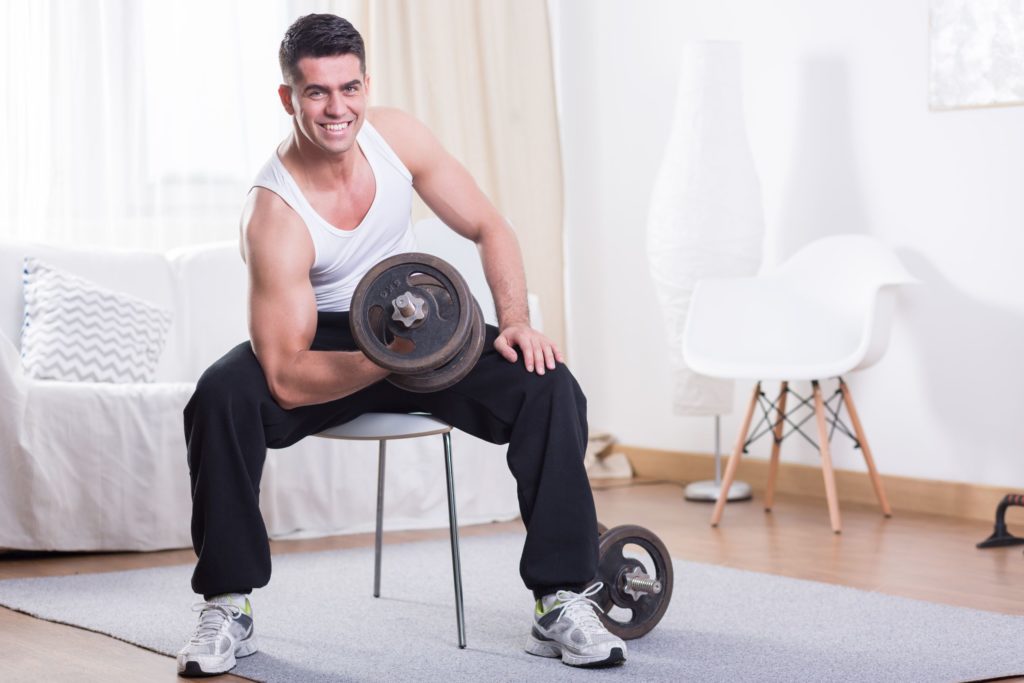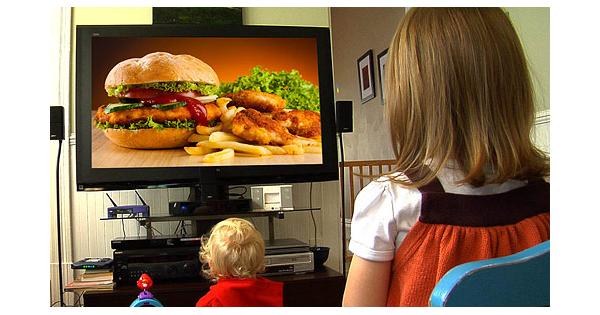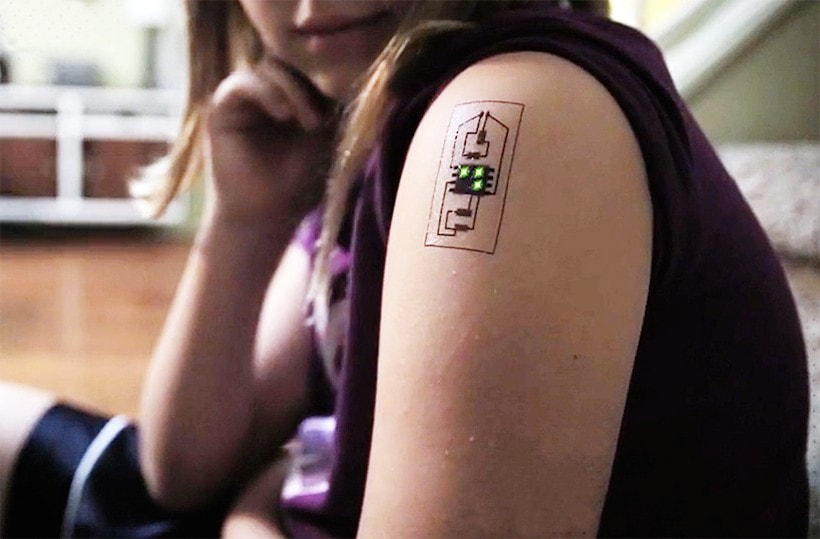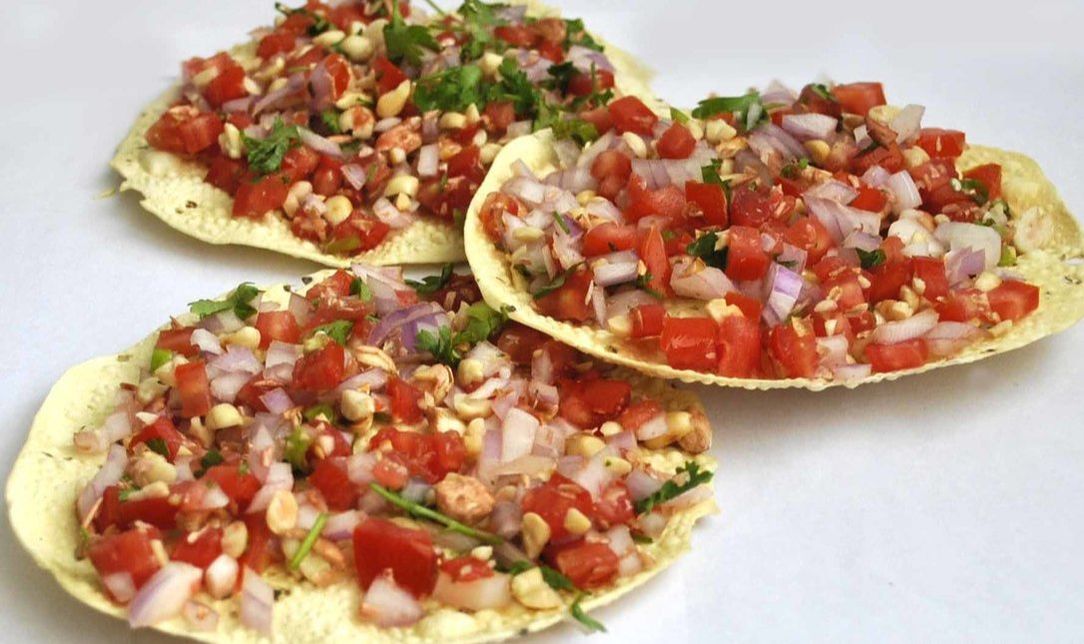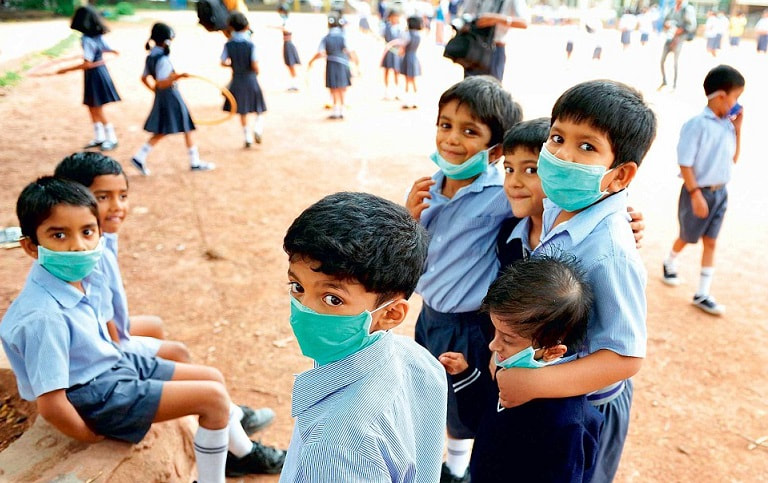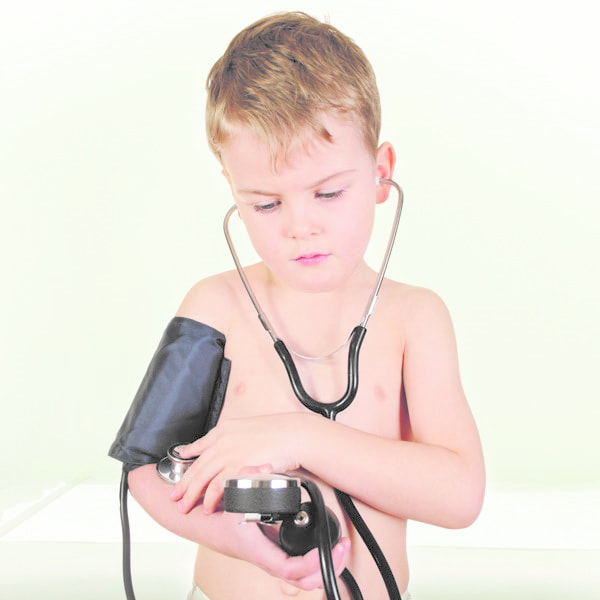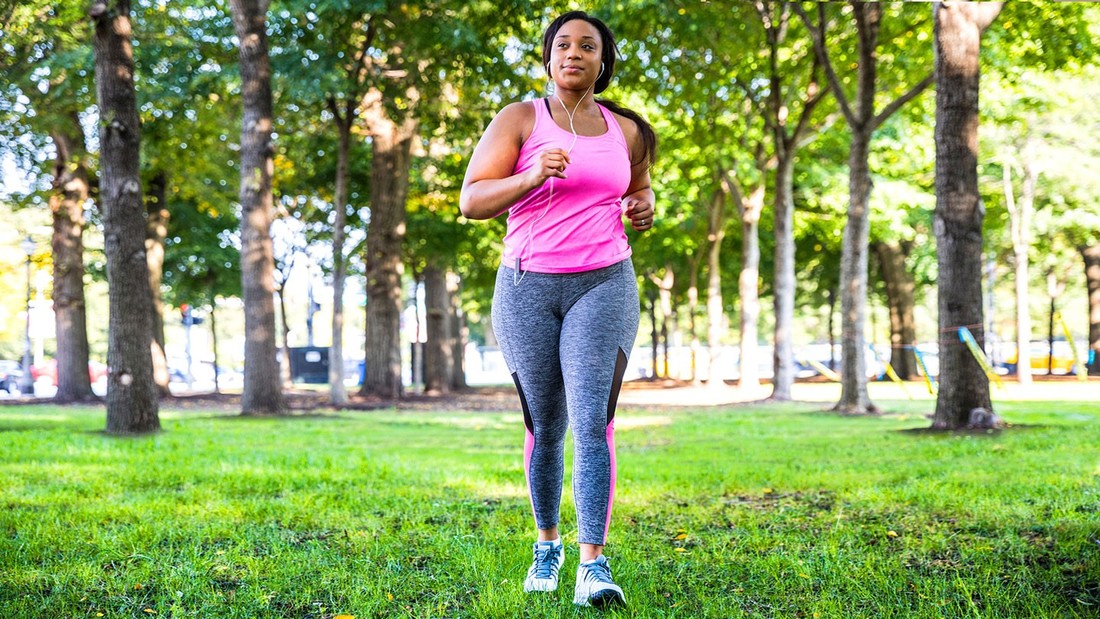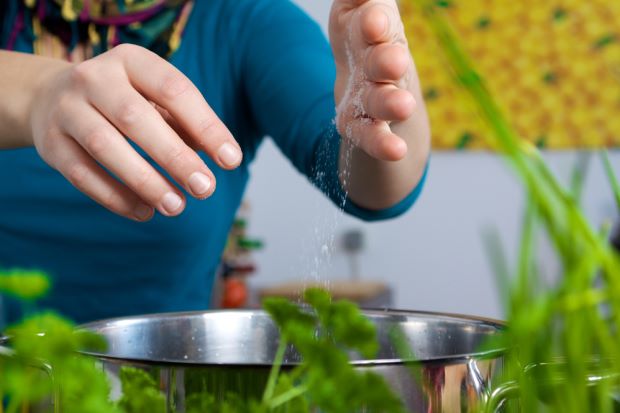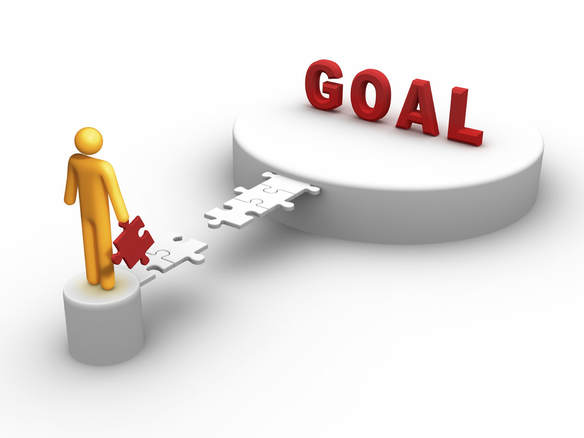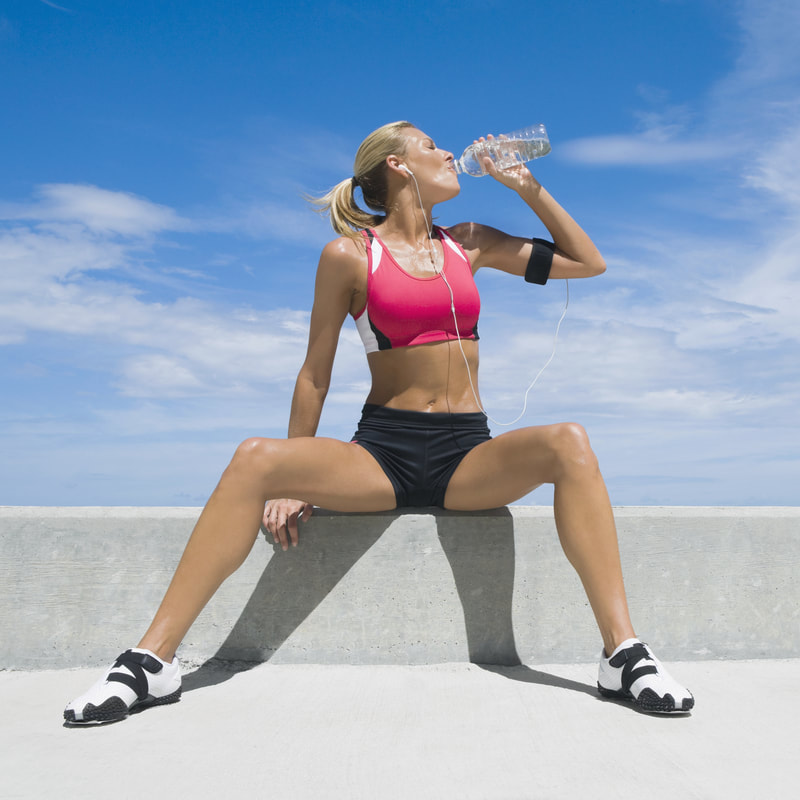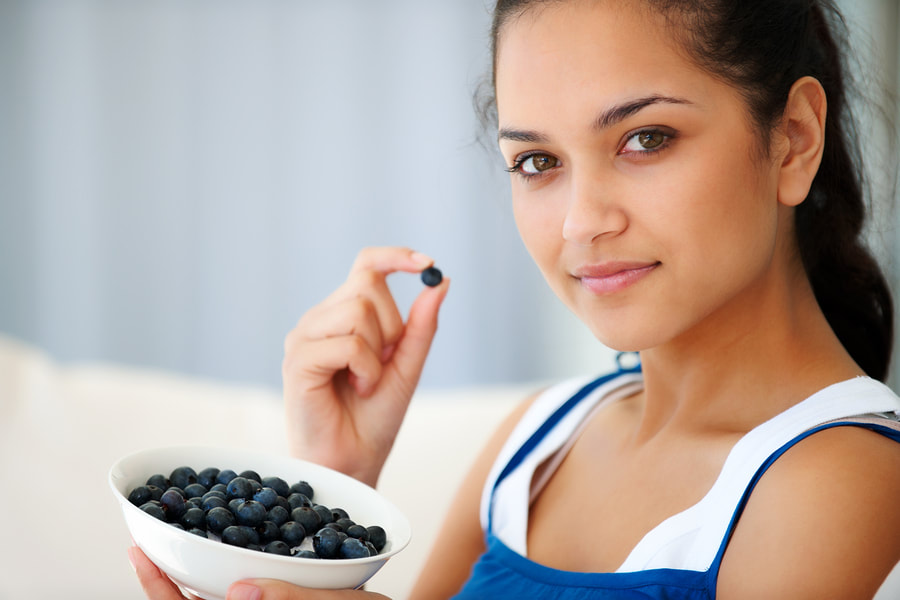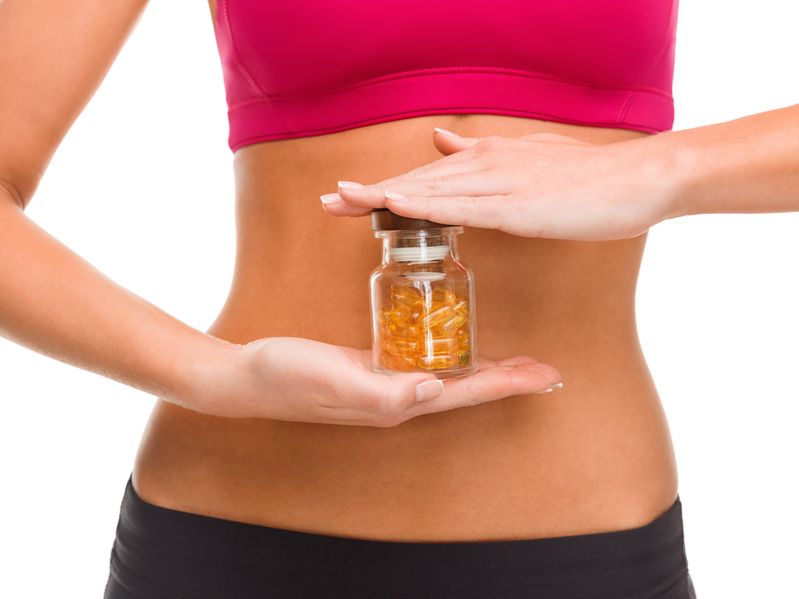|
Every girl born in this world experiences menstruation or periods, normal vaginal bleeding that happens as part of a woman’s monthly cycle. This monthly cycle can be severely painful in the case of some women and is called as dysmenorrhea. This is the most commonly reported menstrual disorder and more than 50% of menstruating women experience some kind of pain for 1-2 days every month.
Dysmenorrhea Dysmenorrhea can be classified as primary and secondary, each having different causes. Primary dysmenorrhea is the most commonly prevalent period pain (menstrual cramps) which is not caused due to other external factors but by natural chemicals called prostaglandins made inside the lining of the uterus. The pain can start a day or two before the periods and last for a few days in most women, while in some it can last for a much more prolonged period. The intensity of pain decreases with age. Usually there is intense pain just after a girl starts having her menstrual cycle and it becomes better as she ages. The pain also subsides or is minimal after giving birth to a baby. Secondary dysmenorrhea is caused due to a disorder in the reproductive system. It occurs at later stages of life than primary dysmenorrhea and the pain worsens over time, instead of getting better. The pain associated with secondary dysmenorrhea lasts longer than normal menstrual cramps, starting a few days before the onset of periods, reaching its peak during menstruation and continuing even after your periods ends. Bear the Pain Painful periods are mostly characterized by menstrual cramps which are a throbbing, cramping pain in your lower abdomen. Other common symptoms of pain include lower back pain, nausea, diarrhea and headaches. People often confuse this with premenstrual syndrome or PMS which is entirely different and whose symptoms include weight gain, bloating, irritability and fatigue. If you are interested in knowing more about PMS, please visit the website www.firsteatright.com. Instead of relying on medication to relieve pain, try generic pain relieving techniques such as:
If you have primary dysmenorrhea, your healthcare provider might suggest using hormonal birth control or pain reliever medication. If you have secondary dysmenorrhea, treatment depends on the source of the pain and in some cases, even surgery might be suggested. Women who exercise regularly have less menstrual pain comparatively. To prevent/reduce pain, it is recommended to make exercise a part of your daily activity. ‘Good mood’ foods are becoming popular and are completely different from comfort foods that we reach to, when we are stressed or unhappy. ‘Good mood’ foods are healthy foods that help to de-stress ourselves in this fast-paced world. Some things are beyond our control and it is up to us to utilize the things that are within our control, and food is one such thing that gives us positive results when used in the right way. Why don’t you try these foods to stay calm and balanced to take the pressure off your shoulders? Folic Acid: Almost 40% of people with depression lack folate and once they start consuming folic acid-rich foods, they feel happier. Research too shows a link between folate deficiency and low emotional health. One of the best sources of folate is sitting right in front of you in the kitchen-cooked lentils. One cup of cooked lentils fulfils 358 micrograms of the 400 micrograms of folate required per day. Other sources of folic acid include asparagus, oranges, avocados, beans and leafy greens. Blueberries: Eating those luscious tiny blueberries rich in flavonoids and vitamin C can help boost mood and avoid depression in young people, according to a study. These berries are rich in anthocyanins, a flavonoid that gives these berries the blue color and are heart-healthy. Vitamin C can decrease blood pressure and cortisol levels that can go haphazard during times of high stress. Try mixing a handful of these berries in your oatmeal cereal or smoothie. Dark Chocolate (70%): Yup, it’s true! You can bite a few chunks of these extra-dark chocolate to uplift your mood when you feel low as it interacts with the brain’s chemical messengers that play a vital role in regulating mood and energy. High in polyphenols and flavanols, dark chocolate puts you in a great mood and lowers your blood pressure too. Studies also prove that eating dark chocolates and almonds help uplift heart health. The details of this study are given at www.firsteatright.com. 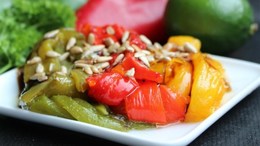 Edible Seeds Make a Great Salad Dressing Edible Seeds Make a Great Salad Dressing Seeds: Edible seeds such as pumpkin seeds, sesame, sunflower or flax seeds are rich in magnesium, a nutrient that is popularly known to increase well-being and stabilize emotions. You can add the seeds of your choice to garden-fresh salads or prepare your own seed butter. Chamomile and/or Lavender Tea: Sipping a cup of freshly made chamomile and/or lavender tea can calm your nerves, decrease anxiousness and promote sleep. They are also caffeine-free and hence, totally safe to rely upon whenever you feel stressed. It can be your go-to drink first thing in the morning after getting up or the last thing in the night before going to bed. Sunshine makes us bright and gay and as the sun sets, our energy levels too decrease. We are tired after a day’s hectic work and feel like cheering up with some comfort foods which is a deadly decision in the case of dieters. To add to all this, a new research has found that the hours after sunset might be the toughest few for individuals on a weight loss program or for those trying to stay slim.
Among all these negativism, one good thing is that people can take steps to curb overeating-they can have an early dinner followed by a portion of fruit after some time or combat stress with alternative ways. This study is based on the two hormones ghrelin and peptide YY. Ghrelin is popular as the ‘hunger hormone’ and many researches were conducted earlier on this hormone to find out if it could prove to be useful in any way to curb obesity. You can read more about ghrelin at www.firsteatright.com. Peptide YY is a hormone that is linked with the feeling of fullness. The study involved 32 obese/overweight people who were between the age of 18 and 50 years among which almost 50% of the participants were diagnosed with binge-eating disorder and were constantly trying to come out of overeating. The participants fasted for 8 hours and were allowed to drink a liquid meal (608 calories) either at 9 a.m. or 4 p.m. Two hours after consuming the meal, the participants were subjected to a stress test where they were asked to place a hand inside a bucketful of cold water for two full minutes. Some 30 minutes after this stress test, all the participants were offered a buffet spread consisting of pizza, chips, cookies and candies. The blood tests tracked levels of ghrelin and peptide YY every now and then all through the study. The results revealed that hunger hormone levels (ghrelin) rose and fullness hormone levels (peptide YY) fell more in the evening comparatively than the morning hours. The stress test upped the ghrelin levels only in the evening. So, we conclude that evening is the worst hours of the day for those trying to avoid weight gain as you are prone to overeating, especially more if you are stressed or used to binge eating. Every woman is given utmost care and showered with affection during her pregnancy period. Even the most trivial symptom is taken care of. But how many of them realize that they might have cardiovascular issues during pregnancy? Almost none. This is because, the signs and symptoms of a heart failure closely resemble pregnancy symptoms. Common symptoms of a heart failure during pregnancy include rapid weight gain, swollen & fluid-filled legs, elevated BP levels, fatigue and trouble sleeping which are usually ignored as common pregnancy symptoms.
The same was the issue with Preeti, a 29-year-old pregnant girl. During her 35-week routine checkup, ultrasound and stress tests revealed that the fetus had stopped growing after the 30th week, the woman’s heart rate was extremely weak, and an immediate C-section was needed to save the life of both, mom and the baby. Mind you, still no one ever have the slightest doubt that Preeti could be suffering from a heart failure. She had a C-section delivery, and everyone were relieved that the symptoms were going to subside down. But the night after delivery, she had trouble sleeping and experienced breathing difficulties. An echocardiogram test revealed that Preeti had fluid accumulation in her lungs and scarring in the valves, which are indications of rheumatoid heart disease. The hospital right away started her on the necessary treatment procedures and she was shifted from the maternity ward to the cardiac ward, where she became a cardiac patient officially. After returning home, Preeti was mapped to a cardiologist and her treatment journey continued with open-heart surgeries and medications. Slowly down the line, she was able to resume her active lifestyle with no medical restrictions and only daily medications to stabilize her heart rate. There are thousands of patients like Preeti. Never take anything lightly and assume that you are too young/healthy to be affected with heart disease, a common misconception among most women. Lead a healthy lifestyle, go for annual full-body check-ups and be happy. This is the only way to avoid or lower the risk of any health hazard. Get in touch with a registered dietitian nutritionist at www.firsteatright.com to help you with healthy diet charts and physical exercise to live a healthy life. Serious, deep-from-the-heart resolutions are part and parcel of many new year plans. There is no great theory or secret behind living up to these resolutions and sticking to a simple strategy can give you the desired result. A Healthy Lifestyle Change is Forever There is no finish line or winning point in the race for nutrition. It is a continuous process that needs gradual change over time to achieve overall physical and mental well-being. Weight loss using crash diets or other dangerous slimming methods should not be your focus. Take it one step at a time and achieve long-term positive results. Restaurants and fast-food joints have sprung everywhere and it is easier to add something in your diet instead of removing it. Start with including a small portion of fruits and vegetables each day to gradually shift focus towards healthier eating. If your aim is weight loss, performing physical activity along with nutritious food can help to burn excess calories. 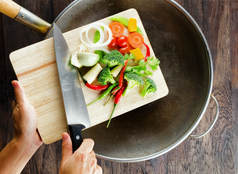 You are in Control While Cooking at Home You are in Control While Cooking at Home Try to Cook with Passion Instead of looking at cooking food as a strenuous task, try to take it up with interest and happiness. Eating home-cooked food is much healthier and cheaper than dining out. Buy fresh produce from your local farmers’ market or grocery shop, and fresh fish and lean meats can be purchased as and when needed. Explore new recipes that are easy to make but rich in nutrition value. Eat Out with Caution
When you dine out, the control over cooking food is with an unknown person who is more concerned with preparing tasty food that something nutritious to attract clients. But, eating out is inevitable for few people and they are forced to take their meals at restaurants most days of the week. Such people should choose their food and restaurant with caution. Choose restaurants that use olive oil or canola oil, fresh vegetables, seafood and whole grains. Stay away from deep-fried foods and unhealthy carbs while eating out. Don’t Get Hitched by Fad Diets Many companies try to lure people around new year to benefit financially by offering discounts and special packages for weight loss. They try to sell superfoods, slimming shakes and much more products that are all gimmicks. There is no instant solution for weight loss. The weight accumulated over the years cannot be dissolved in some days’ time. The goal should be to eat smart, play hard and be active. Instead of getting fooled by fraudulent weight loss advertisements, it is better to meet a registered dietitian nutritionist who can plan a healthy weight loss program fitting your requirements. Get in touch with reputed RDNs at www.firsteatright.com to complete your new year goal successfully. Beverage Choices Too Affect Calorie Intake Plain water is the best thirst quencher. Nothing can beat the refreshing quality of pure drinking water. Skim milk, black coffee or tea, coconut water or plain buttermilk can also be consumed. Your milkshakes and other sugary drinks can shoot up calorie values consumed in a day. Limit such drinks and stick to water or skim milk. Smoking was mostly confined to men in earlier decades. But now, more women have taken up smoking as they find it as one suitable way to prove that they are equal to their men counterparts and find it fulfilling. The number of women smokers almost doubled during the period 2005 to 2010 and female smokers are outnumbering male smokers these days.
Health Consequences of Smoking in Women Last 50 years have seen a 3-time rise in risk of death due to smoking in women and the statistics almost equal men’s risk. The staggering data is such that there are more cases of women dying from lung cancer these days compared to breast cancer. Chronic obstructive pulmonary disease (COPD) has no cure and 90% of COPD cases are caused due to smoking as explained at www.firsteatright.com. Women smokers in specific age groups are 38-times likelier to develop COPD that women who have never ever smoked. Also, more number of women are dying from COPD compared to men and they seem more sensitive to developing COPD at a younger age. While heart disease as the primary cause of death was subjected to the men population until recently, women who smoke after the age of 35 are said to be at a greater risk of dying from coronary heart disease than men who smoke. The ugliest side effect of smoking in women is the effect it causes on their fetus or baby. All of us may be passive smokers at some point, but when you subject your fetus to risks and consequences of smoking, this is unethical and inhuman. Smoking during pregnancy can have several side effects such as premature birth, low birth weight, birth defects or even affect the placenta (organ which helps in passing on nutrition from mother to fetus). It is better that the woman quits smoking while she is planning for a baby or at least as soon as she gets pregnant. If not, cessation at any stage of pregnancy can help to safeguard the health of the mom and the unborn baby. Smoking in women not only affects the heart and lungs but can end up in cervical cancer too. Life expectancy of an any smoker is at least 10 years less than the life expectancy of non-smokers. Also, children are more around their moms and this makes them vulnerable to the smoke emitted from tobacco use. Exposure to secondhand smoking puts the children at an increased risk of ear infections, lower respiratory illnesses, severe asthma attacks, coughing, wheezing, sneezing and breathlessness. Also, teens are more likely to smoke if they have a family member or a close friend who smokes. Help the Women in your Life Quit Smoking Quitting tobacco use can be a difficult task as the person is addicted to nicotine by then. With the help of nicotine replacement products, such as gums and patches, medications and free consultations quitting becomes much easier. The advantages of quitting smoking are many-heart attack risks decrease enormously during the first year after quitting, stroke risk drops to the risk of a non-smoker within five years of quitting tobacco use and the risk of dying from lung cancer is shelved by 50% within 10 years of quitting. While not all succeed in their first attempt to quit smoking, many are likely to start quitting after several attempts. One gets the motivation to quit by looking at the list of advantages that come along with the quitting factor. Sometimes, even the best of your intentions to stay active and exercise daily go futile. The most intense fitness freaks are challenged with adhering to exercise schedules once a while. To prevent reoccurrence of such lags, we need to analyze the hindrances that we may face during our route to fitness and decipher strategies to tackle or avoid them.
Tick Tock Clock The most trivial and common excuse given for refraining from exercise is lack of time. We prioritize job, kids, household chores, social interactions and other things over exercise and bother about fitness only when it is inevitable, or we have immense time in our hand. Human body was designed to move around often and when we consider exercise to be an indispensable part of living, we are sure to pave way for it by hook or crook. Include exercise in your daily ‘to do’ list which would make it mandatory for you to workout, instead of trying to include workout whenever you find time. In spite all these tricks, if you still find yourself lacking time for exercise, start with just five minutes of activity every day which is sure to promote good health than doing nothing at all. Above health advantages, these five minutes will make exercise a part of your daily routine and a lifelong habit. Stress Maker or Stress Buster Although exercising is a great option to get rid of the stress that’s troubling you, most people find it annoying to involve themselves in physical activity when they are stressed. Exercise acts as a stressor on the body and vigorous-intensity exercise during these times is not recommended. To enjoy the activity and also reduce stress, pick something that makes you happy, fulfilled and refreshed. If you don’t feel like going for a 10-kilometer jog or perform some intense workouts, let it be. Decipher the ones that make you feel less stressed and focus on these activities. Hot or Cold, be Bold The sunshine, chirpy little birds and the bright yellow sand outside are sure to attract you to workout outside. But, the situation is not the same when it is raining cats and dogs, or the temperature drops drastically and makes you want to get inside a blanket and enjoy a hot cup of chai. Decide upon a warm and safe place to workout during winter or rainy season. You can switch on some fast-beat song and workout inside the comfort of your home or even go for a few laps inside a mall. If you keep waiting for the perfect weather to start your physical activity session, you are sure to remain inactive most time of the year. If you are looking for some creative summer activity workouts, you can find a lot many at www.firsteatright.com. Dead-end Each of us are sure to reach a fitness plateau even when guided with the best fitness instructions. This can lead to irritation and disappointment if weight loss or beauty is the only goal of exercising. Instead, if we have non-weight-related goals such as better stamina, improved sleep, increased energy or simply feel the satisfaction of staying active we can remind ourselves of these advantages during the plateau stages and keep pushing ourselves harder. Injured or Ill Illness or an injury might prevent a person from exercising. Instead of focusing on what cannot be done, shift focus to what can be done. If you have hurt your leg, do some upper body stretches. If you suffer from the flu, take a short walk outside your home to breathe some fresh air. Your goal during these times must be to stay in touch with some activity, so that you don’t lose your momentum to exercise regularly. Check Often If you feel that your fitness routine is going down or not happening as per your plan, rewind the plans and go through the strategies used. Find out the elements that are pulling down your fitness goal. There is no destination that can be reached with fitness as it is a continuous process of learning, modifying and improving your overall health and goodness throughout your life. Advertisements are any kids’ favorite as they are short, crisp, colorful and convey the required information through pictures mostly. As soon as an advertisement pops up in the television, our kids’ head turns towards the TV ignoring whatever work he/she might be involved in. This is a common scenario in most of our houses. But the latest WHO reports on television advertisements force us to reconsider our kid’s interest in digital ads. The reports convey the depressing fact that childhood obesity is influenced by promotion of foods and beverages high in saturated fat, salt and free sugars (HFSS). Eating habits are a personal choice but sadly, these habits are affected by a child’s food environment and molded by food producers, retailers, food marketers and others associated with the food market to ensure that HFSS foods are available everywhere and at a cheaper rate than healthier foods. Parents and caretakers are often ignorant of these marketing strategies used in televisions and online media. But when the researchers showed these parents some of the HFSS-food marketing techniques that captures their kid’s interest, they were shocked and immediately expressed a desire to reduce it from the media. Catchy Advertisements & Increasing Childhood Obesity Children under 8 years of age are unaware of the persuasive intent of advertisements and promotions aimed at such children are exploitative. Children are gifted with the ability to recall ad contents and wish for certain products only after the very first exposure or after a few repetitive exposures. Parents too tend to purchase these products requested by their children to satisfy their wishes. So how exactly do these advertisements increase obesity rates in children?
Restrictions on HFSS Products Government should come forward to define “marketing directed at children” and also establish the legal age at which marketing to children could be permitted. Actions to curb these unhealthy marketing strategies include:
 Parents' Behavior Influence Kids' Choice of Foods Parents' Behavior Influence Kids' Choice of Foods Parents Should Play Their Role Properly
Tattoo is a taboo for many. But, when this taboo finds a place in healthcare sector how are we going to react-be joyous, shameful, angry or unhappy?
Sports and health wearables have become a thing of the past now. Although useful, these wearables can never become a part of our body, have a short battery life and there is also this need for wireless connectivity. To overcome these obstacles, researchers have come up with another uber-cool idea that is surely going to make next-gen kids fall in love with it-integrating traditional tattoo artistry to indicate health conditions of an athlete during practice/performance. The seed for thought was biosensors. Researchers developed biosensitive inks that could be used for the tattoo and thereby, nail down biosensors into the skin. The ink changes color depending on the body’s interstitial fluids, that can be used as a surrogate for blood constituents. For instance, green ink changes to brown color if the glucose concentration increases. The researchers have also developed a green ink that can be viewed under blue light and whose brightness increases as sodium concentration rises, thereby indicating dehydration. The research is still in the initial stages and further probing can help unveil a lot more applications of this biologically-sensitive ink. Chronic conditions can be treated effectively by infusing them into permanent tattoos and shorter-duration monitoring is also feasible by injecting this ink into temporary tattoos. Maybe, even invisible ink can be used that reacts to some distinct light form. Signs and symptoms of chronic conditions and their associated treatment procedures are available at www.firsteatright.com. While the public is the ultimate target audience, astronauts can also benefit from this research as they too require continuous health monitoring. This smart ink on the tattoo helps to monitor an athlete’s health condition by the color change that guides or serves to notify the athlete that his/her hydration levels are low or a diabetic when blood sugar levels rise. Its both shocking and surprising to realize the list of things that can trigger a heart attack and cold temperature is one among them.
Heart needs oxygen-dense blood to function properly. Sometimes, fat, cholesterol and other substances (all together known as plaque) in the arteries break out and blood clot happens around this plaque that either blocks or restricts blood flow to the heart. Cold temperatures can sometimes trigger this heart block process too. The Underlying Current between Cold Weather & Heart Attack Freezing temperatures can stimulate constriction of blood vessels. In someone whose blood vessel is already constricted due to some heart condition, further thinning can block blood supply to vital organs. It is not mandatory that chilling temperatures should evoke a heart attack. It can also restrict blood flow to the heart that can cause chest pain, which is an indication of coronary artery disease. Along with coronary heart disease, the cold weather outside can also elevate your risk of other cardiovascular diseases as it puts a strain on your heart and circulatory system. One research also puts forward the fact that, chilling temperatures can increase the risk of ischaemic stroke in individuals with atrial fibrillation. Are these terms mind-boggling? Understand their relevance and consequences at www.firsteatright.com. If it is snowing outside and you rush out to shovel it away, such sudden activity along with the cold temperature can strain the blood vessels that feed the heart and your brain. Your risk is further increased, if you lead an inactive lifestyle. Symptoms Symptoms of heart attack include squeezing, fullness, pain in chest or other parts of the body, breathlessness and haphazard BP rates. Stroke symptoms are “FAST” that include face drooping, arm weakness, speech difficulty and time to call ambulance. Buck Up Fast to Fight Off Chillness Cold weather is not going to affect a healthy individual and increase his/her risk of a cardiovascular illness such as heart attack or stroke. Sometimes, the individual having the disease isn’t even aware of its presence until he/she experiences heart attack or stroke. Take precautionary measures to reduce your exposure to heart attack risks with these steps:
Suicide is a coward’s way of escaping from problems is what people often comment when they hear that someone has committed self-murder. We hear news about suicide on the social media or television only when there is something intriguing about it-such as in the case of the Blue Whale game where committing suicide was the last task for the player. Such types of suicide account for a meager portion of the 8,00,000+ suicides that happen every year. Anytime in a person’s life, the individual can get into the mindset of committing suicide and this made it the second highest reason for death among those aged between 15 and 29 years in 2015. Suicide is not confined to high-income countries and actually, more than 78% of the suicides committed in 2015 was in middle- or low-income countries.
Termed a public health concern, suicides are preventable with inexpensive strategies when there is timely intervention. We feel pathetic when we lose our adorable family member or when we are unable to deal with some financial crisis. Most important reasons for suicide include:
The picture of a rope hanging from a ceiling is what many of us assume from the word ‘suicide’. While this is a common method of committing suicide, around 30% of global suicides are because of pesticide self-poisoning which is prevalent in low- and middle-income countries in rural areas. Using a firearm is also common in some places. Knowing the means of a suicidal attempt is helpful in putting an end to it by restricting access to such means. Breaking Away from the Clutches of Suicide Suicide is preventable, and we can take different efforts at the population level or the individual level to prevent suicide or even attempts for it. Workable ways include:
Why are we Hesitant to Talk about Suicide? Many individuals feel it shameful or uneasy to seek help for suicidal attempts and don’t try to approach a physician for help. As a society, we lack the awareness to approach suicide as a mental health problem and the taboo still exists in countries to openly discuss it. We must overcome this taboo if we want to make even the slightest progress in preventing suicide. Snacking is fun! Each of us love to snack on something. But this ‘something’ is everything when it comes to health quotient and calorie values. Most of us tend to snack twice or thrice a day and it is no great trick to snack wisely without hindering our diet if we decide to snack wisely. Snacks are eaten to prevent overeating during the next meal. Snacks prepared at home help a person feel full and content. Check out these healthy snack preparations given here and start snacking smarter right from today.
Pop in Popcorns into Your Mouth If you have mistaken the greasy, salty popcorn tubs served at malls or theatres to be the center of discussion here, you are absolutely mistaken. Popcorn is authentically a whole grain which has been inappropriately projected as a junk food because of all the unhealthy add-ons to it. Get a pack of air pop kernels and microwave it in a paper bag to get a bowl of healthy snack ready in a jiffy. Some kernels can even be popped using the pressure cooker, making it easy for anyone to make a popcorn snack. Five cups of air popped popcorn contain 6 grams of fiber with just 150 calories. Indulging in one cup of popcorn during snack time will do the trick of satisfying your hunger and taste buds simultaneously. Add some fresh herbs or chili powder to bring in some extra flavor and taste. ‘Bhale Bhale’ Bhel The bhel puri served outside contains a mix of sev, unhealthy sauces and even mixture added to it. Prepare the healthy version of bhel puri at home using plenty of cucumbers, carrots, onions, corn kernels, sprouts and tomatoes mixed with puffed rice. Fruits such as pineapples, pomegranate seeds and apples can be added as per your wish. Garnish the bhel using fresh coriander leaves and chili powder for more flavor. Blend A Smoothie Fancy juice outlets charge hundreds of rupees for a simple smoothie presented in an alluring style. Blend a healthy smoothie with different ingredients of your choice to get a nutritious treat as well as to save some money. Apart from your regular fruits and vegetables, try to add proteins and healthy fats such as peanut or almond butter, avocados and a handful of nuts to help you feel full. Baked Masala Papad Microwave papad and garnish it with finely chopped tomatoes, onions, coriander leaves, red chili powder and squeezed lemon juice to make an instant snack. A Miniature Meal Snacks can sometimes be a smaller version of healthy meals prepared at home. A whole-grain sandwich toast made with banana and honey, oatmeal with low-fat milk and berries and besan (gram flour) cheela with mixed vegetables are sure ways to satisfy your mid-morning or mid-evening hunger pangs. If you are interested in planning a healthy meal plan to suit your calorie requirements, please get in touch with a registered dietitian nutritionist at www.firsteatright.com who can help you with healthy snacks and nutritious meals. When we prepare snacks at home, it is in our hands to use ingredients creatively to dish up interesting recipes. Try to use colorful fruits, vegetables, whole grains and healthy fats as much as possible to make a delightful and nutrition-packed snack recipe. A quick workout can burn off the excess calories added to our body due to the pizza slice at our office luncheon or the chocolate cube that we consumed as a comfort food-this mindset is entirely wrong and the calories in every junk food that you consume need hours of physical activity to burn them off. Listed below are the number of calories present in the most common junk foods that we carelessly consume every now and then, and the amount of exercise needed to get rid of all those calories:
A quarter of the people consuming these foods underestimate their calorie value by at least 500 calories. It is better to restrict these high-calorie foods to special occasions. After reading this, I am sure many of you would plan to double your workout time if in case you consume any of these high-calorie foods. If you would like to follow a calorie-restricted diet for weight loss or if you want to become conscious of the calories that go into your meal every day, get in touch with a nutritionist/dietitian at www.firsteatright.com who can help you plan a healthy diet plan.
Individuals are more sedentary than active. They eat more than what their body requires. There are almost an equal number of food joints as well as fitness joints. The number of hospitals and dental care points are increasing while immunity and health are decreasing. You feel tired, exhausted and worn out even when you climb a flight of stairs or jog to catch your bus! The only positive solution to all these problems is workout/physical exercise. You might join a fitness center, go for a walk, enroll yourself in some sports activity or take up swimming classes with the goal of losing few kilograms. But, is your workout really working out? The table below gives you an estimated outcome of how your exercise plans reflect your weight loss/fitness goals for your corresponding body weight.
All the values correspond to calories/hour
Are you pleased with your present workout and do they correspond to your health goals according to your weight? Only exercise or only diet will not help you reach your target fitness. You need to combine both, exercise and diet to achieve a healthy weight. If you need a balanced diet that incorporates your current food habits, you need to get in touch with a registered dietitian nutritionist at www.firsteatright.com to help you plan a healthy diet chart. Air pollution affects the young and the old, but does the intensity with which it attacks a person remain constant across all age groups? Absolutely not!
Any child is a victim of air pollution, but the youngest children are at a maximum risk. UNICEF comments that almost 17 million babies (under the age of 1) live in some of the most worst affected regions of the world where outdoor air pollution is six times higher than prescribed limits. More than 12 million babies among these affected ones live in South Asia. A Small Introduction to a Big Threat Air pollution is the cause for one of the biggest killers of children, pneumonia and several other diseases such as asthma, bronchitis and other respiratory infections and diseases. To add to this already existing misery, a growing body of scientific evidence points air pollution to have a serious effect on the developing brains of kids. Air pollution has a lasting negative effect on the children’s brain through several mechanisms:
Studies prove that increased air pollution rates affect cognitive outcomes, such as reduced verbal and nonverbal IQ, memory, test scores and other neurological behavioral problems. Air pollutants inhaled during pregnancy can cross the placenta and affect the developing brain of the fetus which can have lifelong effects such as low birth weight which poses risks for healthy childhood development. Hence the recommendation to pregnant mothers to avoid smoking during pregnancy. In some children, it can even cause attention deficit hyperactive disorder (ADHD), anxiety and depression after the age of five. Curbing these Dangerous Side Effects Hazardous air pollution effects can be prevented by:
Healthy diet and lifestyle changes reduce the effects of air pollution on kids. Visit the website www.firsteatright.com to get in touch with a nutritionist/dietitian who can guide you with appropriate instructions on following a healthy lifestyle. ‘Knowing our air’ is the first step towards action. Many cities around the world are installing monitoring stations to assess and publicize air pollution in real time on the internet. During the 1970s and 80s, air pollution due to gasoline combustion containing lead was said to cause serious damage to children’s nervous system and cognition and leaded gasoline was banned in almost every country worldwide. Research shows that a variety of other air pollutants are causing harm to the children’s brains and needs immediate action. Reducing air pollution has a series of other benefits as well-helps reduce greenhouse gas emission which in turn fights against climate change they cause. This is a win-win situation for the kids, the society and the future. It is mostly the person in the passenger seat of the bike who suffers traumatic brain injuries in road accidents than drivers, according to a study. Brain injuries are one of the most serious complications in humans as the individual might lose his/her memory or even go to comatose. Read more on brain injuries at www.firsteatright.com.
Although government bring strict rules on wearing helmets for both the rider and the pillion passenger, it is mostly not followed, or it is only the driver in the bike who wears the helmet. Research done on 80,000 motorcycle drivers and 6,000 passengers who faced an accident found that while 2/3rd of drivers were wearing helmets, only about 60% of passengers took the pain to wear a helmet. Traumatic brain injury is most common among drivers and passengers and statistics show that 40% of passengers experienced this in comparison to only 36% of drivers. In a horrifying few accidents, the driver sometimes is thrown away from the vehicle. This increases the chance of severe head injuries as the force with which the passenger lands on the road may cause a severe impact for the helmet to still offer protection to the head. Drivers rarely face a throw away from the bike as they have a strong hold of the handle bar while the passenger sitting behind the driver has little or nothing to cling on to. Moreover, the driver knows what’s exactly going in front of him/her and gets an additional advantage of holding tighter to some grip while the passenger might not be able to judge the situation precisely and do something favorable as they have no control over the vehicle. This study clearly indicates:
Married or unmarried status has started affecting the health status of individuals!!! A new study has found that unmarried patients with heart disease are at an increased risk of death compared to those who are married. The risk of death is greater in widowed individuals. While earlier studies proved the risk between death and divorce, this is the first of its kind to show the link between marital status and heart-disease related deaths in individuals with existing or suspected coronary heart disease (most common type of heart disease).
The study involved more than 6000 patients who were subjected to cardiac catheterization to find out if they were at a risk of coronary heart disease. Catheterization includes inserting a thin, hollow tube known as the catheter into a large blood vessel that makes it way to the heart. The patients were monitored for 43 months during which 688 patients died from cardiovascular disease and 272 died from a heart attack. Comparatively, being unmarried increased risk quotient of death by 24% from any cause- 45% increased risk of death from cardiovascular disease and 52% increased risk of death due to cardiovascular death or heart attack. A healthy lifestyle too affects the risk of cardiovascular diseases. You can adapt yourself to a healthy lifestyle by getting in touch with a nutritionist/dietitian at www.firsteatrigt.com. The percentage of death risk differs according to the current marital status- there was 40% greater risk for those who were never married, 41% higher risk for those who were divorced or separated and 71% increased risk if they were widowed. The results are greatly surprising as marriage affected the risk of heart disease immensely. The comfort of companionship and the societal support due to marriage are important when people are affected by heart disease. This initiates the need for doctors to check into the marital status of patients when they complain about coronary heart disease. High blood pressure is always linked to adults, but most of us are not aware that children of all ages, from infants to teens, can become victims to high blood pressure. Similar to BP in adults, there are not much symptoms attached to blood pressure in children and early diagnosis and treatment help reduce the associated risks. Unlike blood pressure ranges in adults where one BP reading fits all, the meaning of ‘normal’ is relative here. The physician calculates the right blood pressure ranges based on factors such as gender, age and height. An average systolic or diastolic blood pressure level that is in the 95th percentile or greater depending on at least 3 separate readings is defined as hypertension. Find the various hypertension stages tabulated below:
Factors that Trigger High Blood Pressure in Children
High blood pressure in children can spring up due to various risk factors or it can be secondary hypertension, due to some other health condition. Secondary Hypertension in Children: Few diseases such as thyroid problems, heart problems, kidney problems, certain tumors and sleep apnea and certain medications can instigate high blood pressure in kids. Lifestyle Factors: Family history, overweight/obesity, race and age are contributing risk factors. Heavier and sexually mature teenagers usually have higher blood pressure levels. Research indicates that, obese teenagers who have increased blood pressure values may develop thicker arteries by age 30. While overweight/obesity are greatly associated with BP, family history of hypertension or CVD, male sex and maternal smoking during pregnancy are additional risk factors. Breastfed kids are at a lower risk of hypertension. Treatment Treatment includes a combination of lifestyle factors (diet, weight management and exercise) and medications (if physician prescribes so). Following a DASH diet low in sodium, high in fruits and vegetables, lean meats, whole grains and low-fat or non-fat dairy helps to control BP levels. Read more on DASH diet and its advantages at www.firsteatright.com. Children with hypertension may have target organ damage and are at an increased risk of cardiovascular disease. Despite these health hazards, physicians do not recognize and diagnose the existence of hypertension in children. Diabetes can be delayed or prevented. Isn’t that great news? But, this needs tremendous effort from our end once we are aware that we are at an increased risk of developing the disease. Being overweight, having a close family member with diabetes, having gestational diabetes or being 45 years or older are risk factors for prediabetes.
Shaking Off the Risk Factors Being overweight and leading an unhealthy lifestyle are the main reasons for the attack of Type 2 diabetes, which is the most common form present in more than three fourth of the population. Controlling weight and sticking to healthy habits are in our hands. Listed here are few changes that you can accommodate in your daily routine to lead a healthier life:
Sodium is the main enemy for blood pressure and heart diseases. Although health organizations repeatedly warn individuals to cut down sodium intake and eat healthy food, most of us don’t care about it and end up having high BP. Reputed medical organizations and healthcare units recommend individuals to consume not more than 2,300 milligrams (mgs) of sodium per day with the ideal limit of not more than 1,500 mg per day for most adults. An average human’s sodium consumption is excessive due to these junk foods and processed goods that, even cutting back to no more than 2,400 milligrams a day will improve heart health and blood pressure significantly. While a common man feels that reducing salt usage in our everyday foods might reduce overall sodium levels, the main culprits are the processed, prepackaged and the restaurant foods that we eat often. Approximate amounts of sodium in a given amount of table salt include:
The sad thing here is that most individuals do not realize the huge quantities of sodium that they consume. For instance, one survey analyzed the awareness among 1000 individuals on their sodium consumption levels. One-thirds could not estimate how much sodium they ate and another 54% thought that they were eating less than 2,000 mg sodium per day.
Eating a well-balanced diet that includes ample fruits, vegetables, whole grains, proteins and low-fat dairy products limiting the consumption of red meat, sweets and sugar-sweetened beverages helps to not only limit sodium consumption but also the saturated fat and trans fat consumed contributing to an overall healthy body. Few Individuals are Exempted from Sodium Restriction The sodium limitation (1,500 mg) is not applicable for people who lose huge quantities of sodium in sweat (for instance, competitive athletes), workers exposed to major heat stress (foundry workers and fire fighters) or to those directed otherwise by healthcare providers. Individuals with medical conditions and special dietary needs must follow the instructions of their physician or dietitian. To know the exact quantity of sodium present in foods, it is advisable to check the Nutrition Facts label. If you are unaware of how to go about checking the label, please visit the website www.firsteatright.com for details. Some common sodium-related terms on food packages include:
So, eat your sodium in limited portions to maintain a healthy lifestyle and an overall healthy body that functions properly. New year resolutions are mostly to eat less, weigh less, workout more or stay fit. January starts with many goal plans, new gym enrolments and fitness gears selling like hot cakes. But by February end or mid-March, most gym floors are empty and fitness gears seem lost in our draws. It might seem that resolutions dissolve in sometime and that its practically not feasible to stick to them throughout the year. Though keeping up your promises may not be 100% possible, changes for the better are feasible in terms of health and fitness.
Goal it Right Along with your goal plan, plan how you would be achieving too! If you think upon losing 20 kilograms, lowering cholesterol levels or improving overall well-being as your goal, you are going to end up unsuccessful with the results. Instead, focus on the plan or process which you decide to use to achieve the goal. For a target goal, create process goals that help you reach the target goal. For example, if your goal is weight loss, how will you do it? Will you cut down on food intake? Will you increase physical activity? Detailing such intricate ideas can help you achieve your goal successfully. Read more on pursuing your goal with determination at www.firsteatright.com. Discard Barriers While setting goals, also think about the barriers that might arise along with them. It might be in terms of finances, time constraint, obligations or disinterest. After identifying the barriers, chalk down a realistic plan to achieve it. Rope in an Accountable Partner Find someone accountable for your actions, it might be your best friend, office colleague or a fitness coach. Social support helps you stay focused on your goal and leads you in the right direction. Love Yourself We mostly concentrate on what’s wrong with us ignoring the ones that are absolutely right. While self-criticism might work favorable in some cases, it does just the opposite of what is needed when it comes to eating behavior and weight-loss goals. Whereas, self-compassion helps in behavioral change. Instead of criticizing yourself when you change tracks or go off the goal, ensure and reassure yourself that you are looking out for long-term success and that setbacks are normal. Improving health is a long-term process that needs enough of all the above factors starting right from setting your goal to being in love with oneself. Are you someone who believes that water is the best of all drinks? Not many of us love water and this may be the reason that you may add unwanted calories in the form of sodas, iced teas, coffees and energy drinks. But adding calories through drinks is different from the calories added through solid foods. According to several researches, the main difference is that we aren’t satisfied when we drink calories instead of eating them. It is better to choose healthier drinks that can quench your thirst as well as satisfy your taste buds:
Read the ingredient list: Energy drinks are promoted to be healthy but contain excess sugar and unwanted calories. Such beverages contain added sugars in the form of sucrose, glucose, fructose, maltose, dextrose, corn syrups, concentrated fruit juice and honey. Some beverage cans can contain more than one serving. Ensure to read the ingredients list before drinking so that you don’t end up consuming twice or thrice the added sugars, depending on the number of servings. Do it, one step at a time: Used to drinking sweetened teas or sugary juices regularly? There is no dire need to completely cut off your consumption (it is not possible too!) immediately. Do them gradually, replacing those drinks with pure water. Enrich water: While we often hear suggestions on increasing water intake, it can be a monumental task if you are not interested to do so. Pursue any of these tips given here to rev up your water consumption.
Smoothie Love: Are you game for a chilled smoothie or do you crave for a mid-afternoon snack? Save on your budget and enhance nutrition with a homemade fruit smoothie! Blend your favorite fruits with some low-fat unsweetened yogurt, ½ cup low-fat milk and few ice cubes to stir a lip-smacking smoothie! Coconut lovers can try a glass of fresh unsweetened or unflavored coconut water to step up electrolytes for a healthy heart while fermented food lovers can try their hands on a cup of kombucha for its supposed health benefits. While kombucha might contain some added sugars, it is considerably less than what soft drinks contain. All the hype created around fermented foods is not always true but there is no harm in consuming these foods as they are advantageous to our health in some way. Read more on fermented foods and their different proposed benefits at the website www.firsteatright.com. We get apples, carrots or watermelons throughout the year nowadays. But, do you know that the crunchy apple that you eat now was picked last year and preserved until now? Rather than choosing your favorite fruit to eat, choose ones that are classic to the season to get them fresh, unpreserved and healthy. It is strongly believed that eating produce that is available in the present season helps to promote good health and balance.
Alongside physical activity, eating healthy foods to optimize workout and improve results is needed for physical health. This becomes possible only when we eat seasonal fruits and veggies. Pick your produce with these tips:
Loneliness is graver than obesity and is fully qualified to be termed as a major public health hazard. Having social presence and being connected with other people in the society is a fundamental requirement of every individual which is indispensable for well-being and survival. With the ever-growing concept of nuclear families, work from home jobs and social media, most of us don’t even know our neighbors, are not bothered to take time to talk to our near and dear ones and rely on online sites such as Facebook or Instagram for social interaction paving no way for face-to-face conversations. The most-affected population groups are the elderly people who have lost their contact with most of their family members, ignored and taunted by them and finally pushed to live in recluse.
Loneliness affects health by increasing stress hormones and inflammation which can lead to arthritis, heart disease, Type 2 diabetes, dementia and even an intention to commit suicide. If you wish to come out of stress, there are practical ways discussed at www.firsteatright.com that can help you make your life much better. Trivial activities such as bathing, grooming and preparing meals becomes a strenuous task for elderly people and the percentage of death increases by six-folds when such individuals feel left out, isolated or lack companionship. Loneliness or Social Isolation? Social isolation is far better from isolation in that, it only implies few social connections or interactions. But, loneliness involves the subjective perception of isolation which is the discrepancy between one’s desired and existing level of social connection. In other words, some people might live in isolation yet not feel lonely as they prefer to live by themselves, but some other people might live with many individuals surrounding them, but still feel lonely if their relationship is not emotionally rewarding. Being unmarried, losing your spouse or death of a loved one are some crucial factors that determine the feeling of loneliness in an individual. Here again, some factors must be kept in mind-not all marriages are successful and the quality of relationship matters the most in any fulfilling relationship. Loneliness is not the disease of the older people. It is predominantly seen among adolescents and young adults, then again in the elderly generation. Researchers feel that the intensity of loneliness decreases from young adulthood through middle age and does not reach its peak until again the oldest old age. Hence, loneliness is an issue that exists across the entire population. Even though we are not yet sure if social isolation or loneliness plays the prime role in affecting health and longevity, if we start assuming social connections as the fundamental human need, we cannot ignore the risks of social isolation even when people don’t feel lonely. Effects of loneliness include:
Time and again we keep hearing tons and tons of information, views, facts and myths on food supplementation and weight loss. Individuals have started relying on superfoods, supplements and all other things on this earth except themselves. A well-balanced diet, daily physical activity and a healthy lifestyle are the top-most important factors for a healthy mind and body. Instead of just following these principles, we rely on machines, energy powders or even starve sometimes to lose weight.
Trials were conducted to test the effectiveness of food supplements on aiding weight loss in individuals. A common outcome of dietary trials is weight loss and the provision of food supplements may help to elevate weight loss but there is no hard and fast rule that these supplements should instigate weight loss without any changes on the total diet to balance total energy intake. Research proves that food supplementation acts as an incentive to regulate intake and makes an individual stick to his/her dietary recommendations. While providing individuals with some food termed to be a supplement that promotes weight loss is counter-productive, providing food supplements is a better way to improve adherence to a dietary lifestyle. Randomized controlled trials provided food supplements to multiple study groups and the results from all these groups were pooled to study the effects of food supplements on weight loss. While providing food supplements elevated the chances of weight loss in a person, there were other factors that influenced weight loss too:
|
AVOID FRAUD. EAT SMART.+91 7846 800 800
AuthorDietitian & Nutritionist Dr. Nafeesa Imteyaz. Archives
July 2024
Categories
All
Dr. Nafeesa's Blog @blogspot |
- Home
- Written Testimonials
- Consult
- Clinics
- Blogs
-
Diet & Nutrition
- Diabetes Reversal
- IVF IUI not needed for PCOS PCOD Infertility
-
Medical Nutrition
>
-
Disease & Conditions
>
- Infertility | PCOS
- Diabetes Mellitus
- Cholesterol
- Hypothyroid
- Kidney Problems
- Hypertension
- Cardiovascular Diseases
- Liver Diseases
- Gastro intestinal disorder
- Cancer
- Metabolic Disorders
- Orthopedic Disorders
- Eating Disorders
- Dietary Recall
- Weight Record Filled By Clients
- Online Payment Transaction Details
- Online Clients Weight Check Form
- Our Program Package Service Charges
- Weight Record 2017 Clients
- Measurements sent by Clients
- Terms & Conditions Of Payment
- Thanks. Your Form is Submitted
- Video Testimonials
- Lifestyle & Wellness
- Lifestyle & Wellness Blog
- Allergy & Intolerance
- Weight Loss / Gain
- Weight Loss / Slimming Blog
-
Disease & Conditions
>
- Life Cycle Nutrition >
- Sports Nutrition >
- Integrity in Nutrition
- Knowledge Centre
© COPYRIGHT 2022. ALL RIGHTS RESERVED. FRST HEALTHCARE PVT LTD.
Dr. Nafeesa Imteyaz of First Eat Right clinic, is the Best Dietitian Nutritionist in Bangalore. Best Dietitian Nutritionist in Pune. Best Dietitian Nutritionist in Hyderabad. Best Dietitian Nutritionist in Chennai. Best Dietitian Nutritionist in Mumbai. Best Dietitian Nutritionist in Delhi. Best Dietitian Nutritionist in Kolkata.

